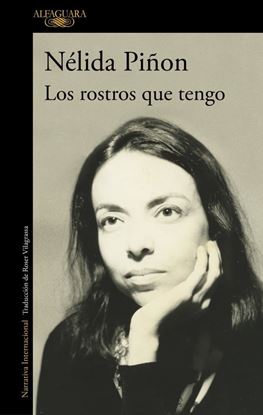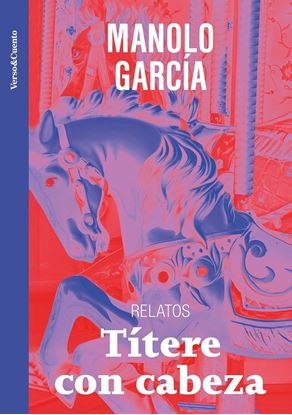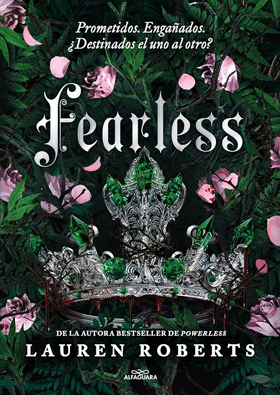

LO QUE CALLA TU MIRADA
Un gran amor prohibido, drama y secretos en el Bilbao de principios del siglo XX.
"Una deliciosa y apasionante historia que seduce al lector".Celia Santos
Bilbao, 1914. Amelia Eguren, hija de una familia ilustre, está a punto de casarse con un hombre al que apenas conoce. Tras su compromiso se esconden muchos intereses, algunos que ella ni siquiera sospecha. Mientras que el es el dueño de uno de los negocios más prósperos de la ciudad, Amelia dirige en la sombra la fábrica de gaseosa La Blanca, así que esta alianza podría brindarle todo aquello por lo que ella siempre ha luchado.
Sin embargo, cuando Irune, una humilde limpiadora, entra a trabajar en la fábrica, su percepción sobre el mundo cambia, y entre ambas aflora un inesperado vínculo por encima de los prejuicios. A lo largo de cuatro decadas, estas dos mujeres lucharán por sobrevivir y se aferrarán al amor en un tiempo convulso en el que las guerras, la enfermedad y la lucha por la libertad sacudirán sus hogares.
Con una narrativa envolvente y llena de emoción, Elena Peña nos traslada a un bullicioso Bilbao en los albores del siglo xx perfilando dos protagonistas inolvidables.
1,550
1,240
LOS ROSTROS QUE TENGO
En esta obra póstuma e inédita, Nélida Piñon -Premio Príncipe de Asturias de las Letras y la primera mujer que llegó a presidir la Academia Brasileña de las Letras-, cose su testamento literario y lo convierte en una celebración de la vida donde relata su pasión por la creación, ahonda en el sentido de pertenencia a un territorio y canta su amor a la música y al arte entretejiendo episodios e recuerdos sobre sus amigos más íntimos: Gabriel García Márquez, Mario Vargas Llosa, Susan Sontag o Clarice Lispector. Introduciendo retazos de su infancia, en la que las lenguas española y portuguesa se entrelazaron, y creando una sinfonía cultural que resuena en su vida y en su literatura, Piñon acompaña el lector por una profunda reflexión sobre la mortalidad y el poder de la invención a través de las palabras.
1,550
1,240
LAS SIETE VIDAS DE MAX VON SPIEGEL
La historia de este director de cine empieza en las trincheras de la Primera Guerra Mundial, donde deja atrás su nombre real. Tras sobrevivir a la contienda, decide comenzar una nueva vida en la República de Weimar que le lleva a participar en la producción de la película Metropolis. Allí, el gran Fritz Lang se convierte en su maestro, pero también en su rival, y cuando los nazis lo persigan, no le quedará más remedio que huir a España.
Con la cámara bajo el brazo, hasta el mismísimo Caudillo le abrirá las puertas del palacio de El Pardo. Pero las aventuras de Spiegel no acabarán ahí: espionaje, traición y el amor por el cine terminarán llevándolo hasta Hollywood, donde podría encontrar por fin el anhelado éxito…, aunque antes tendrá que enfrentarse una vez más a su acérrimo enemigo Lang.
1,550
1,240
TITERE CON CABEZA
Títere con cabeza es un beatus ille moderno, una crítica desde el humor y la reflexión cáustica a nuestra vida actual, tan llena y tan vacía, a nuestras estructuras mentales y sociales, y una llamada a la animalidad, al instinto y a dar valor a las cosas más anodinas y sencillas de la existencia.
A través de los relatos de este libro, Manolo García nos introduce en una máquina del tiempo, nos hace viajar al pasado, a Woodstock o a la guerra civil española, y a la vez nos proyecta a futuros donde la IA y los androides son protagonistas. Sin embargo, los personajes de todos ellos parten de una premisa común: su pasmosa, simple y minúscula condición de humanidad. Son historias anti épicas, anti heróicas, de supervivencia y picaresca, que componen un retrato grotesco y a la vez entrañable de todos nosotros.
1,550
1,240
ASESINO DE BRUJAS: HIJOS DEL REY (ED.LI)
Lou, Reid, Coco y Ansel huyen no solo del aquelarre, sino también del reino y de la Iglesia. Son fugitivos y no tienen donde ocultarse.
Para sobrevivir, necesitan aliados. Y unos muy poderosos. Pero mientras Lou se preocupa cada vez más por salvar a sus seres queridos, se adentra en el lado oscuro de la magia. Y el precio a pagar podría ser la persona a la que más teme perder: Reid.
Ellos están unidos por un juramento y solo existe una cosa que puede separarlos: la muerte.
1,550
1,240
LA VIOLINISTA
En la esplendorosa Venecia del siglo XVIII, la desesperación y la miseria nunca están lejos. A través de un agujero en la pared , las niñas huérfanas son abandonadas en el Ospedale della Pietà cada día.
Anna Maria, de ocho años, es solo una de las trescientas niñas que crecen dentro de las muros de la Pietà, pero sabe que es diferente. Obsesiva y talentosa, tiene la misión de convertirse en la mejor violinista y compositora de Venecia y en su mundo de color y sonido parece que nada la detendrá.
Pero las probabilidades siempre están en contra de una niña huérfana, así que cuando el maestro Vivaldi la toma como alumna predilecta Anna Maria es consciente de que esta es su única oportunidad. A medida que su estrella se eleva, amenazando con eclipsar a su mentor, el sueño que ella ha perseguido con tanta determinación se ve en peligro...
1,550
1,240














